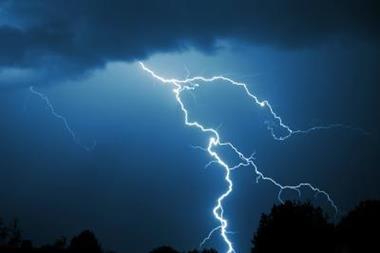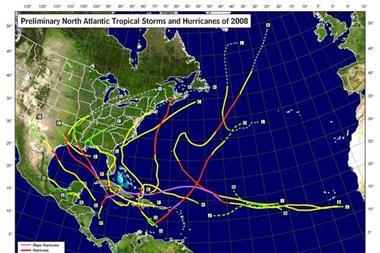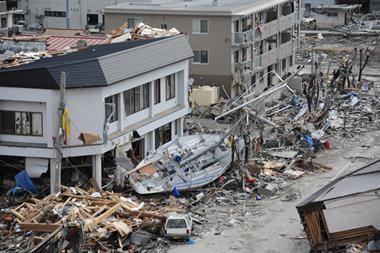Anselm Smolka was one of the few geoscientists in the insurance sector when he joined Munich Re Group. Today he is head of Geo Risks, corporate underwriting for the group. He tells Catastrophe Risk Management about his work. By Lee Coppack
CAT RISK: What is your scientific background?
SMOLKA: I am geologist by training. My principal motivation for taking on this field of study was the wish not to spend all of my professional life in a lab, but to work at least partially in the field.
CAT RISK: How did you become involved with the reinsurance industry?
SMOLKA: When I started my studies at university, I was completely fixed on an academic career. But during my studies I became afraid of ending up in an ivory tower, and felt the desire to move away from pure science. As a physical scientist, I knew nothing of reinsurance, of course, and I was fascinated to work with the first generation of satellite pictures. Remote sensing was in its infancy at this time, and I moved in this direction.
Incidentally, I got to know the head of the engineering division of Munich Re. It was this personal contact which led to the foundation of the Geo Risks Research unit in Munich Re, which I joined two years later as the second scientist. At this time, there were just three geoscientists working in the insurance sector worldwide.
I saw there an ideal opportunity to apply my geological knowledge to real practical problems, and had also to become familiar with other disciplines, such as meteorology. Now I have served almost 32 years in the Geo Risks group and have a senior position. Due to the dynamic development of scientific knowledge and of risk transfer products, and my global responsibility, my job has never lost its attraction.
CAT RISK: What do you think is the earthquake research now taking place with the most relevance to the re/insurance industry?
SMOLKA: Advanced methods for risk assessment, and even more so the application of better risk assessment to loss prevention and reduction by improved construction techniques, materials and building regulations. Furthermore, refinement of probabilistic hazard assessment in terms of conditional probabilistic mid-term (10 to 30 year) forecasts is important to set regional priorities for prevention programmes.
CAT RISK: What lessons on resilience have we learned from recent catastrophes, such as Hurricane Katrina?
SMOLKA: We have learned that one cannot rely completely on engineering protection schemes, and that application of existing knowledge (meaning that the scenario was known beforehand) to practical (preventive) measures is absolutely essential. We have also learned that consequential losses can play a much bigger role in comparably frequent events than may have been anticipated. Hurricane Katrina – if you look at the storm itself – was not such a rare event. But the losses were extremely high.
CAT RISK: To what extent are historical accounts of earthquakes useful for modern research?
SMOLKA: They are useful, and, indeed, indispensable, to get a better understanding for the possible size of rare extreme events. But it is essential to interpret historical accounts in their historical context, which requires cooperation with historians and archaeologists. I feel particularly fascinated by the Lisbon earthquake in 1755, which marks the beginning of the scientific investigation of earthquakes, of disaster recovery planning and earthquake resistant reconstruction. It was a truly great earthquake and still poses an enigma as to its tectonic source.
CAT RISK: What research would you do if time and money were (almost) unlimited and why?
SMOLKA: The number of interesting research topics is infinite. But I would concentrate my efforts on the question of how to convert knowledge into action. Usually, it is not the lack of knowledge which causes disasters, but the lack of awareness and consciousness, and in consequence, lack of prevention.
CAT RISK: You published a report in 2005 discussing the risks of mega-cities. How do you see the conclusions you reached then about the heightened risks in such concentrations of population in light of developments since?
SMOLKA: The November terrorist attack in Mumbai is a reminder of how easily a mega-city can be paralysed by a forced system failure. The phenomenon that the development of living space and infrastructure does not keep pace with the rapid influx of rural population into urban centres has not changed for the better and leads to an ever increasing vulnerability of mega-cities.
Postscript
Lee Coppack is editor of Catastrophe Risk Management.
lee.coppack@cat-risk.com
www.cat-risk.com



















